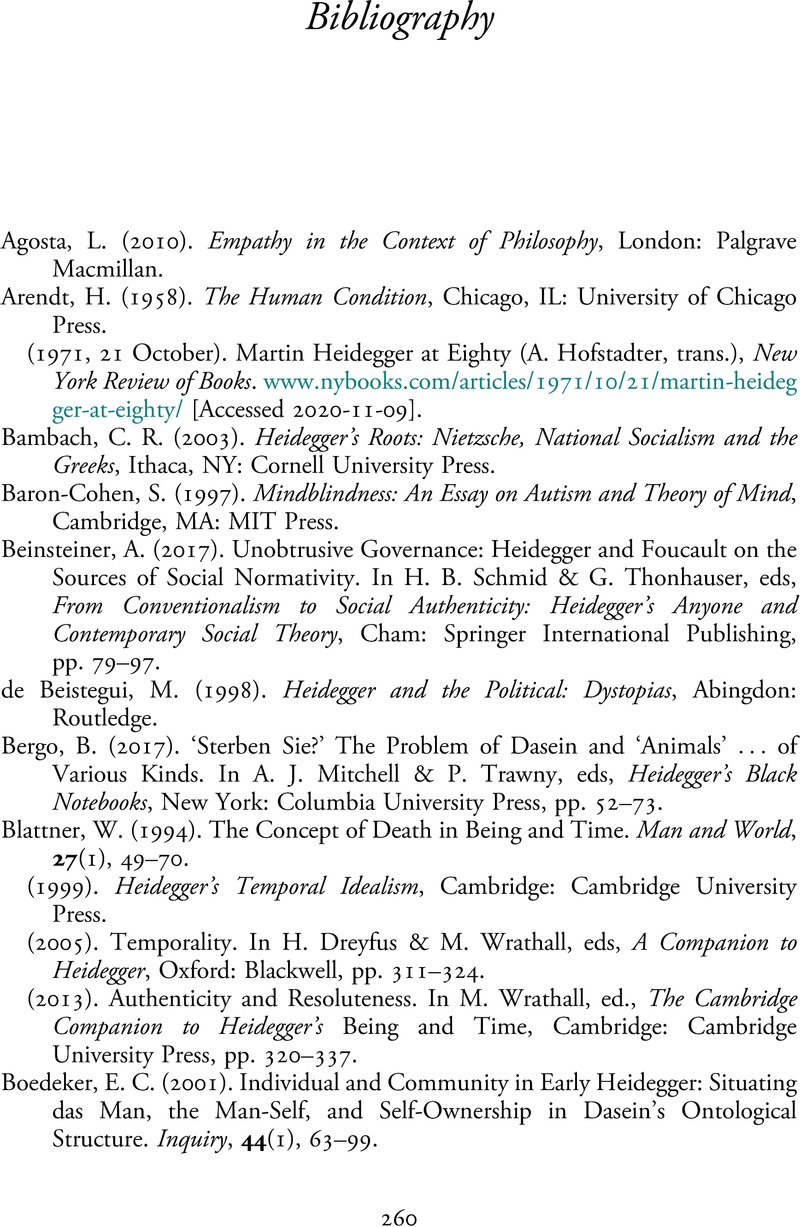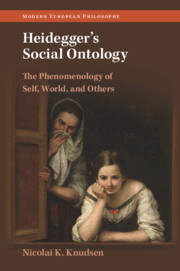Book contents
- Heidegger’s Social Ontology
- Modern European Philosophy
- Heidegger’s Social Ontology
- Copyright page
- Epigraph
- Contents
- Acknowledgements
- Abbreviations of Works by Heidegger
- Introduction
- Part I Being-In-the-World and Being-With
- Part II Forms of Being-With
- Part III Politics and Authenticity
- Bibliography
- Index
- References
Bibliography
Published online by Cambridge University Press: 18 February 2023
- Heidegger’s Social Ontology
- Modern European Philosophy
- Heidegger’s Social Ontology
- Copyright page
- Epigraph
- Contents
- Acknowledgements
- Abbreviations of Works by Heidegger
- Introduction
- Part I Being-In-the-World and Being-With
- Part II Forms of Being-With
- Part III Politics and Authenticity
- Bibliography
- Index
- References
Summary

- Type
- Chapter
- Information
- Heidegger's Social OntologyThe Phenomenology of Self, World, and Others, pp. 260 - 273Publisher: Cambridge University PressPrint publication year: 2022



